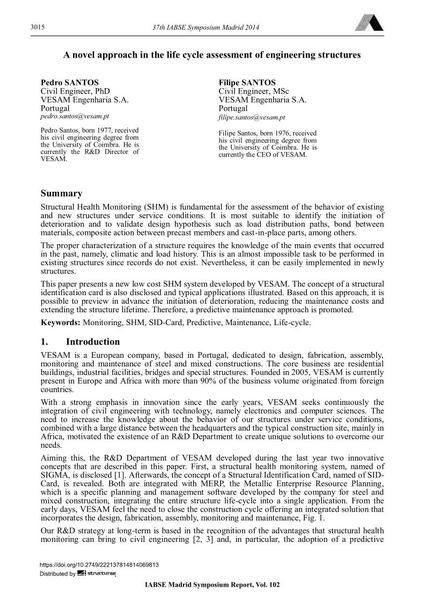A novel approach in the life cycle assessment of engineering structures

|
|
|||||||||||
Détails bibliographiques
| Auteur(s): |
Pedro Santos
Filipe Santos |
||||
|---|---|---|---|---|---|
| Médium: | papier de conférence | ||||
| Langue(s): | anglais | ||||
| Conférence: | IABSE Symposium: Engineering for Progress, Nature and People, Madrid, Spain, 3-5 September 2014 | ||||
| Publié dans: | IABSE Symposium Madrid 2014 | ||||
|
|||||
| Page(s): | 3015-3022 | ||||
| Nombre total de pages (du PDF): | 8 | ||||
| Année: | 2014 | ||||
| DOI: | 10.2749/222137814814069813 | ||||
| Abstrait: |
Structural Health Monitoring (SHM) is fundamental for the assessment of the behavior of existing and new structures under service conditions. It is most suitable to identify the initiation of deterioration and to validate design hypothesis such as load distribution paths, bond between materials, composite action between precast members and cast-in-place parts, among others. The proper characterization of a structure requires the knowledge of the main events that occurred in the past, namely, climatic and load history. This is an almost impossible task to be performed in existing structures since records do not exist. Nevertheless, it can be easily implemented in newly structures. This paper presents a new low cost SHM system developed by VESAM. The concept of a structural identification card is also disclosed and typical applications illustrated. Based on this approach, it is possible to preview in advance the initiation of deterioration, reducing the maintenance costs and extending the structure lifetime. Therefore, a predictive maintenance approach is promoted. |
||||
